Examples
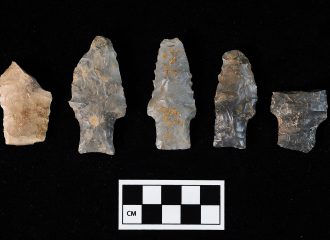
Saltpeter Cave
Saltpeter cave in Newton County is an archeological site that has the potential to shed new light on the Archaic Period in the Ozarks because of its deep, stratified archeological deposits and the modern methods that were used in its excavation. The name of the site comes from its use as a saltpeter mine during…
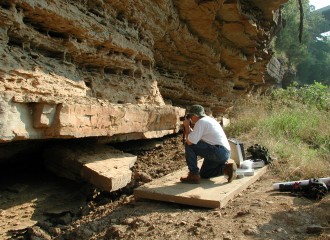
Brown Bluff
Brown Bluff, in the Boston Mountains, was first excavated by archeologists in 1932. The excavations were part of a project conducted by Samuel Dellinger and the University of Arkansas Museum to collect material from the bluff shelters in the region. Additional excavations were conducted in the 1990s when the site was impacted by the construction…

The Arkansas Hempstead Point
The oldest radiocarbon date archeologists have associated with an artifact in Arkansas is 8720+/- 30 which was derived from a sample of charred wood nearby this Hempstead point from Breckenridge Rockshelter in Carroll county Arkansas. This Hempstead point is currently the oldest dated point form from a rockshelter in Arkansas. Hempstead points functioned as both…
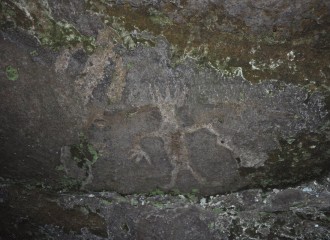
Rock Art
Prehistoric peoples who used bluff shelters sometimes used the walls of the shelter as a “canvas” on which to create art. The term “rock art” refers to images rendered on natural rock surfaces, such as bluff faces, cave walls, and large boulders. There are two main kinds of rock art found in Arkansas Ozark bluff…

Edens Bluff Seed Bag
By Lydia Rees & Elizabeth Horton In 1932 Dellinger’s crews excavated the Edens Bluff Shelter in Benton County, Arkansas, along the White River. Among the other interesting artifacts found at the site was a bag of seeds. This woven bag contains about a liter of seeds from a domesticated but now extinct starchy-oily seed plant…

The Narrows
Rock Art at the Narrows The Narrows is a bluff shelter in the Boston Mountains that has been known to both locals and archeologists in the region for many years. It is known primarily for its spectacular rock art which depicts several human figures, or what archeologists call anthropomorphs. Among the rock art at The…
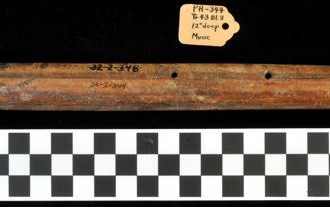
Breckenridge Flute
The oldest known example of a Native American flute has been found right here in Northwest Arkansas. In the 1930s Samuel Dellinger, curator of the University of Arkansas Museum, sent crews out to excavate at several prehistoric bluff shelter sites in the Ozarks. These excavations unearthed many important artifacts and due to the extremely dry…
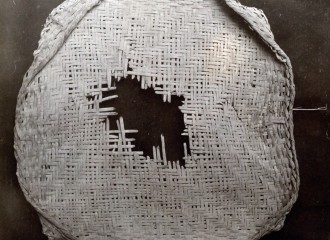
Cob Cave Tray Basket
One item very commonly used by Native Americans almost never survives archeologically—baskets. Baskets are one of the amazing things available for archeologists to study in the University of Arkansas Museum bluff shelter collections. The Cob Cave Shelter in Lost Valley in the Buffalo National River was visited by Samuel Dellinger in 1931 early in his…
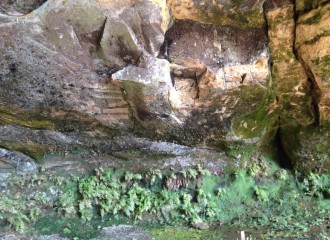
Frog Bayou Shelter
Frog Bayou Shelter Not all archeological sites are dug by academic archeologists. Some are excavated by private professional firms that specialize in digging sites when federally funded projects impact cultural resources. The idea is not to stop the building of the road or other project but to document the historic or prehistoric resources before they…
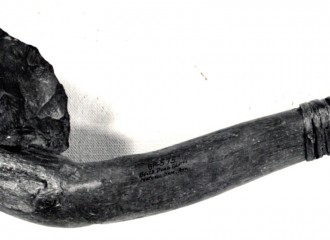
Beaver Pond Bluff Shelter Axe
The Beaver Pond Shelter in Crawford County was excavated by Samuel Dellinger’s University of Arkansas Museum crews in 1934. Among the artifacts found in this shelter was this “axe.” This is a perfect example of the kind of information that is available in bluff shelter sites because of the amazing preservation of usually perishable materials. The…